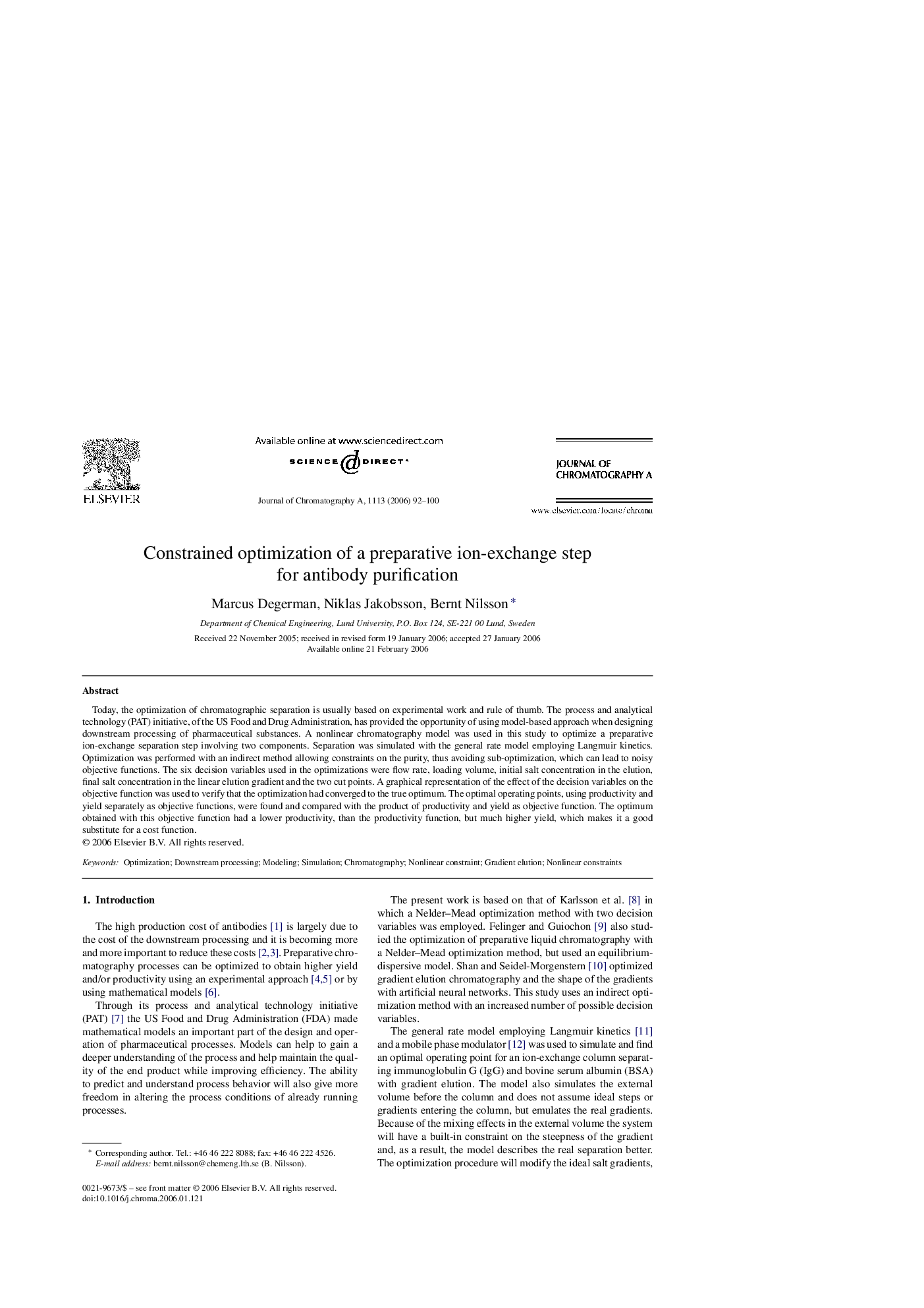| Article ID | Journal | Published Year | Pages | File Type |
|---|---|---|---|---|
| 1211553 | Journal of Chromatography A | 2006 | 9 Pages |
Today, the optimization of chromatographic separation is usually based on experimental work and rule of thumb. The process and analytical technology (PAT) initiative, of the US Food and Drug Administration, has provided the opportunity of using model-based approach when designing downstream processing of pharmaceutical substances. A nonlinear chromatography model was used in this study to optimize a preparative ion-exchange separation step involving two components. Separation was simulated with the general rate model employing Langmuir kinetics. Optimization was performed with an indirect method allowing constraints on the purity, thus avoiding sub-optimization, which can lead to noisy objective functions. The six decision variables used in the optimizations were flow rate, loading volume, initial salt concentration in the elution, final salt concentration in the linear elution gradient and the two cut points. A graphical representation of the effect of the decision variables on the objective function was used to verify that the optimization had converged to the true optimum. The optimal operating points, using productivity and yield separately as objective functions, were found and compared with the product of productivity and yield as objective function. The optimum obtained with this objective function had a lower productivity, than the productivity function, but much higher yield, which makes it a good substitute for a cost function.
